Sauna as a valuable clinical tool for cardiovascular, autoimmune, toxicant- induced and other chronic health problems.
Crinnion WJ.
Altern Med Rev. 2011 Sep;16(3):215-25
Far infrared radiation (FIR): its biological effects and medical applications.
Vatansever F, Hamblin MR.
Photonics Lasers Med. 2012 Nov 1;4:255-266.
Repeated sauna therapy improves myocardial perfusion in patients with chronically occluded coronary artery-related ischemia.
Sobajima M, Nozawa T, Ihori H, Shida T, Ohori T, Suzuki T, Matsuki A, Yasumura S, Inoue H.
Int J Cardiol. 2013 Jul 15;167(1):237-43.
Effects of Waon therapy on chronic fatigue syndrome: a pilot study.
Soejima Y, Munemoto T, Masuda A, Uwatoko Y, Miyata M, Tei C.
Intern Med. 2015;54(3):333-8.
Efficacy of Waon therapy for fibromyalgia.
Matsushita K, Masuda A, Tei C.
Intern Med. 2008;47(16):1473-6.
The effects of repeated thermal therapy on quality of life in patients with type II diabetes mellitus.
Beever R.
J Altern Complement Med. 2010 Jun;16(6):677-81.
Regular thermal therapy may promote insulin sensitivity while boosting expression of endothelial nitric oxide synthase–effects comparable to those of exercise training.
McCarty MF, Barroso-Aranda J, Contreras F.
Med Hypotheses. 2009 Jul;73(1):103-5.
Benefits and risks of sauna bathing.
Hannuksela ML, Ellahham S.
Am J Med. 2001 Feb 1;110(2):118-26.
Cardiovascular and Other Health Benefits of Sauna Bathing: A Review of the Evidence.
Laukkanen JA, Laukkanen T, Kunutsor SK.
Mayo Clin Proc. 2018 Aug;93(8):1111-1121.
Passive heat therapy protects against endothelial cell hypoxia-reoxygenation via effects of elevations in temperature and circulating factors.
Brunt VE, Wiedenfeld-Needham K, Comrada LN, Minson CT.
J Physiol. 2018 Oct;596(20):4831-4845.
Could Heat Therapy Be an Effective Treatment for Alzheimer’s and Parkinson’s Diseases? A Narrative Review.
Hunt AP, Minett GM, Gibson OR, Kerr GK, Stewart IB.
Front Physiol. 2020 Jan 10;10:1556.
Arsenic, cadmium, lead, and mercury in sweat: a systematic review.
Sears ME, Kerr KJ, Bray RI.
J Environ Public Health.


